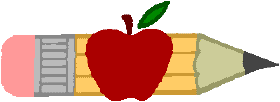Click for video about self-modeling.
 As stated earlier, an important principle of modeling is perceived similarity between the observer and the model. When the observer considers herself similar to the model, learning is more likely. A new line of research that maximizes perceived similarity is called self-modeling. In self-modeling, a tape or photograph is made of a learner doing some performance. The tape is usually edited to show only positive behavior. Dale Schunk and Antoinette Hanson (1985) showed how effective self-modeling can be. When elementary children viewed videos of their own mathematics work, they showed better achievement than those who were taped, but did not see their tapes, or than those who were not taped at all. Viewing tapes of peer models was not as useful as viewing oneself, but it resulted in greater skill acquisition than viewing no models at all. Videotape feedback showing one’s own skillful performance conveys to students that they have made progress, and it increases their self-efficacy for that skill.
As stated earlier, an important principle of modeling is perceived similarity between the observer and the model. When the observer considers herself similar to the model, learning is more likely. A new line of research that maximizes perceived similarity is called self-modeling. In self-modeling, a tape or photograph is made of a learner doing some performance. The tape is usually edited to show only positive behavior. Dale Schunk and Antoinette Hanson (1985) showed how effective self-modeling can be. When elementary children viewed videos of their own mathematics work, they showed better achievement than those who were taped, but did not see their tapes, or than those who were not taped at all. Viewing tapes of peer models was not as useful as viewing oneself, but it resulted in greater skill acquisition than viewing no models at all. Videotape feedback showing one’s own skillful performance conveys to students that they have made progress, and it increases their self-efficacy for that skill.
- If a video camera is available, tape your student while he is working and later allow him to view himself being successful. You can also photograph your student at work and photograph projects the student has completed. While showing the tape or photographs, elicit positive comments about the skills the student acquired and was demonstrating.
- Self-modeling can also occur through visualization. Before beginning a new task, you can mentally walk your student through the task. By talking the student or your class through the task first, they develop a sense of success before they even encounter the task. This strategy has been used successfully with students who are afraid of change. Before you ask the student you are working with to begin longer-term projects, take a few minutes to review the project with her. Have the student share what steps she may take and how she sees the final project.
Check Your Understanding:
- When sharing video or photographs of the student working, provide general compliments about what the student was doing.
True False
Next Section: Conclusion
Previous Section: Use Peer Models
© 2000 – Del Siegle – This material may not be reproduced or distributed beyond this website.